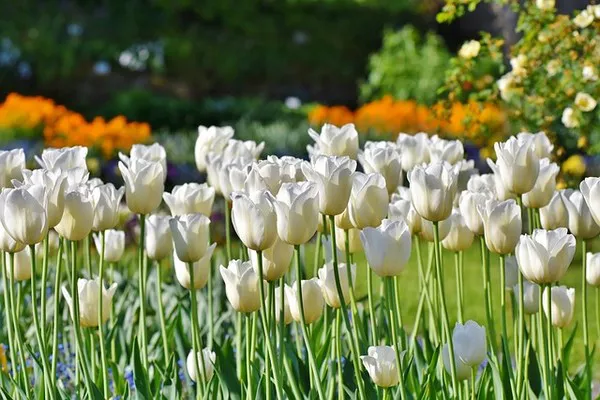Gardening enthusiasts and nature lovers alike find joy in cultivating vibrant and colorful flowers. Planting flowers not only adds beauty to your surroundings but also contributes to a healthier environment. However, successful flower cultivation requires more than just a love for nature; it demands a well-equipped toolkit, essential knowledge, and a touch of creativity. In this comprehensive guide, we will explore the key elements you need to consider and the tools required to plant flowers successfully.
Selecting the Right Flowers
Before diving into the technical aspects of flower planting, it is crucial to choose the right flowers for your garden. Factors such as climate, soil type, and sunlight play a pivotal role in determining which flowers will thrive in your specific location. Researching and selecting flowers that are well-suited to your local conditions will set the stage for a successful gardening experience.
Understanding Soil Composition
Soil is the foundation of any successful garden. Different flowers have distinct soil requirements, and understanding your soil composition is paramount. Conduct a soil test to determine its pH level, nutrient content, and drainage capabilities. Most flowers prefer well-draining soil with a slightly acidic to neutral pH. Amending the soil with organic matter, such as compost, can enhance its fertility and structure.
Essential Gardening Tools
To embark on a successful flower planting journey, assembling the right tools is crucial. The following tools are essential for cultivating a thriving flower garden:
a. Trowel: A hand trowel is a versatile tool for digging small holes, transplanting seedlings, and weeding. Choose a sturdy, ergonomic trowel for comfort during extended use.
b. Garden Gloves: Protect your hands from dirt, thorns, and potential irritants with a pair of durable garden gloves. Opt for gloves that provide a good grip and allow for flexibility.
c. Pruning Shears: Keeping your flowers well-maintained requires regular pruning. Invest in a quality pair of pruning shears to trim dead or overgrown branches and encourage healthy growth.
d. Watering Can or Hose: Proper watering is crucial for the well-being of your flowers. A watering can or hose ensures that your plants receive the right amount of water without causing soil erosion or waterlogging.
e. Garden Fork: For loosening compacted soil, a garden fork is indispensable. It helps improve aeration and allows plant roots to penetrate the soil more easily.
f. Wheelbarrow: Moving soil, mulch, or plants becomes much more manageable with a wheelbarrow. Choose a sturdy, well-balanced wheelbarrow for efficient transportation of gardening materials.
Planting Techniques
Achieving optimal results in flower planting involves adopting proper planting techniques. Here’s a step-by-step guide to help you through the process:
a. Prepare the Soil: Begin by clearing the area of any debris, rocks, or weeds. Loosen the soil using a garden fork to ensure good aeration.
b. Digging Holes: Use your trowel to dig holes for the flowers. The depth and spacing will depend on the specific requirements of the chosen flowers. Refer to the planting instructions provided with the seeds or seedlings.
c. Planting Depth: It’s crucial to plant flowers at the correct depth. This information can typically be found on seed packets or plant labels. Planting too deep or too shallow can impact the flower’s ability to establish roots and thrive.
d. Watering: After planting, water the flowers thoroughly to help them settle into their new environment. Ensure consistent moisture during the initial stages of growth.
e. Mulching: Applying a layer of organic mulch around your flowers helps retain moisture, suppress weeds, and regulate soil temperature. Mulching also adds nutrients to the soil as it breaks down over time.
Maintenance and Care
Once your flowers are planted, ongoing care is essential to ensure their health and longevity. Regular tasks include:
a. Weeding: Keep your garden free from weeds that can compete with your flowers for nutrients and sunlight. Regular weeding prevents invasive plants from taking over.
b. Fertilizing: Depending on the type of flowers you’ve planted, periodic fertilization may be necessary. Choose a fertilizer with the appropriate nutrient balance for your specific flowers and apply it according to the recommended schedule.
c. Deadheading: Remove spent flowers regularly to encourage continuous blooming. Deadheading redirects the plant’s energy towards new growth and promotes a neater appearance.
d. Pest Control: Monitor your flowers for signs of pests and take prompt action if necessary. Insecticidal soap or natural remedies can be effective without harming the environment.
See Also What Does Yellow Roses Mean On Valentine’s Day
Conclusion
Planting flowers is a rewarding and fulfilling endeavor that enhances the beauty of any outdoor space. By selecting the right flowers, understanding your soil, and investing in the essential tools, you can create a flourishing garden that brings joy and tranquility. Adopting proper planting techniques and maintaining regular care will ensure your flowers thrive and continue to brighten your surroundings for seasons to come. Whether you’re a novice gardener or a seasoned enthusiast, this comprehensive guide provides the knowledge and tools needed to embark on a successful flower planting journey.


